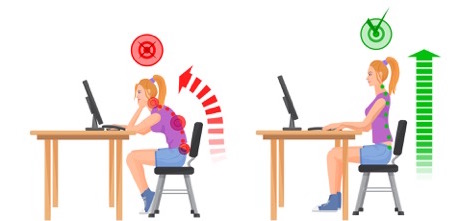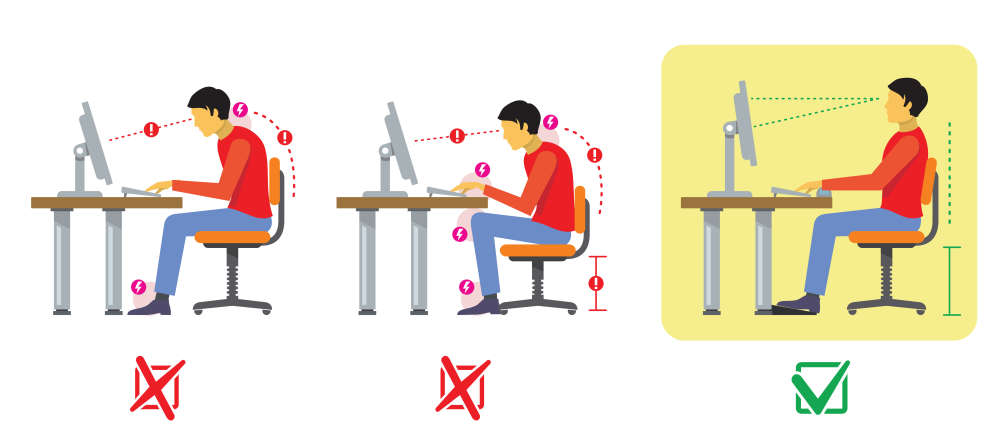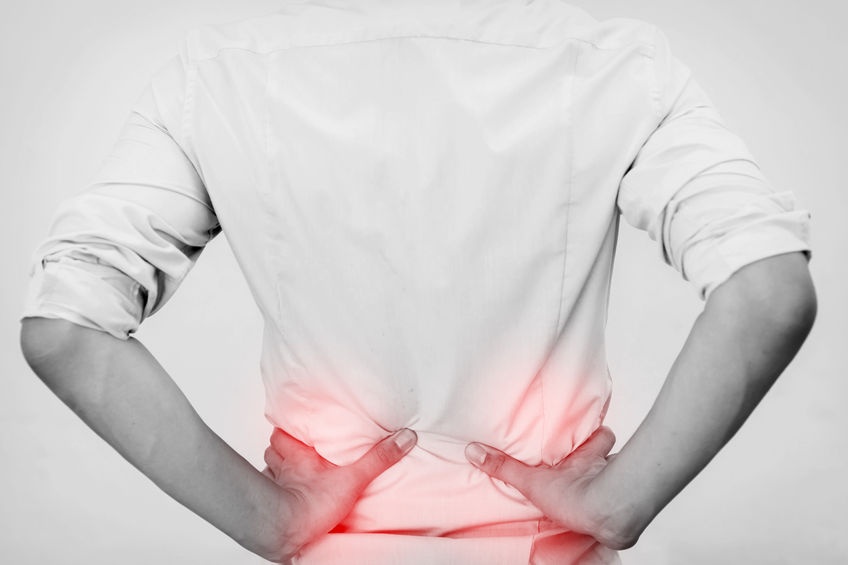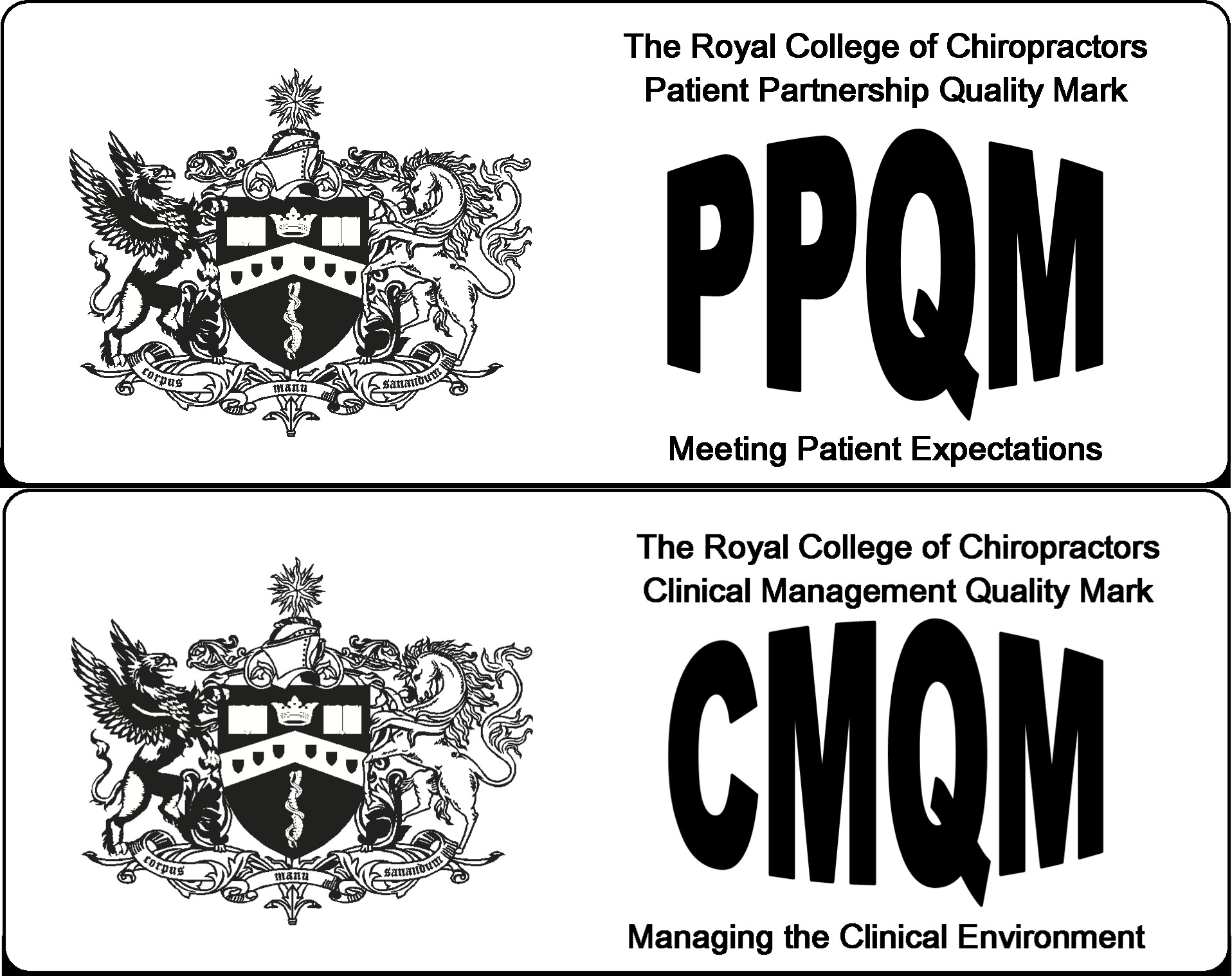COMPUTER POSTURE
In many activities of modern life, at home, school or college, at work, or on the move, more and more of us are spending large parts of our day using a computer. When sitting and concentrating on the screen for long periods, we may not be aware that our position could be harmful to our spine. In order to combat this, maintain a better ‘computer posture’ and therefore protect our backs, the Amersham Chiropractic Clinic has some advice to keep in mind when working, twittering, blogging, surfing or emailing.
All-important adjustments
Always take the time to adjust your chair, particularly if you share your computer with others.
- Your seat should be adjusted so that your feet are flat on the ground or under your seat, your knees bent and lower than your hips. Your eyes should be level with the top of the computer screen. You may need to put the screen on a stand or just on a book to bring it to the correct height.
- Relax when sitting into your chair, making sure you have your bottom against the seat back with your shoulder blades are touching the back rest of the chair.
- Arms should be flat and your elbows level with the desk or table you are using. Your seat should have arm rests.
- Take regular breaks. Never sit at the computer for more than 40 minutes; less if possible.
- When you take a break, walk around and stretch a little; do something completely different.
- Remove any obstacles from under your desk to ensure you have enough leg room.
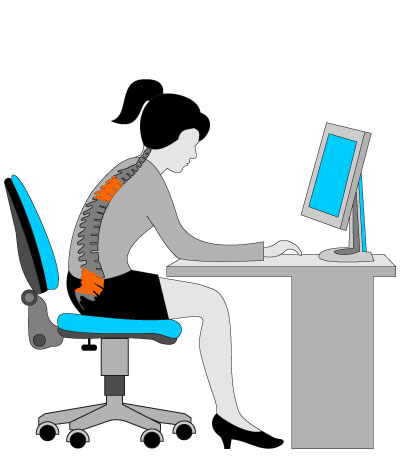
Experience the Benefits of Chiropractic Care Today
Using a laptop or iPad
The portability of a laptop makes it very convenient and flexible to use, but it is tempting to use them in situations where you might be in an awkward position. You may not realise that you are in an uncomfortable or potentially in a pain provoking position if you are concentrating on what you are doing.
- If using a laptop, it is worthwhile getting a stand or resting it on a book to achieve the correct height. Ensure the screen is at eye level!
- For laptops used in the home, use a separate keyboard and mouse, as this makes it much easier to use the laptop in a more ‘back friendly manner’.
- When on the move with your laptop, it is worth checking your bag or briefcase for items you will not need. You would be surprised how much unwanted ‘stuff’ quickly accumulates and this extra weight in your bag is extra weight that your shoulders and back have to bear.
- Use a rucksack design laptop case, carry it on both shoulders and adjust the straps so that the bag is held close to your back.
- If you use use your laptop or tablet on the train, don’t sit for long periods doing this, as you are looking down onto the screen with your head unsupported.
